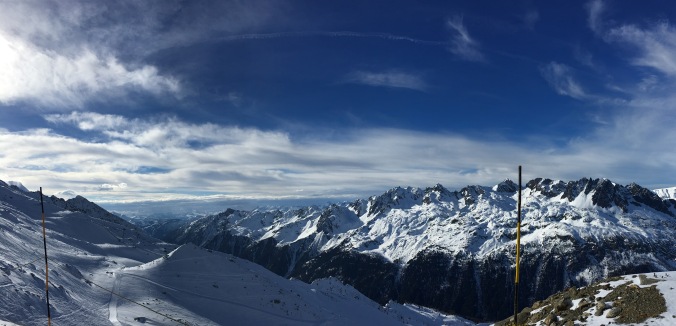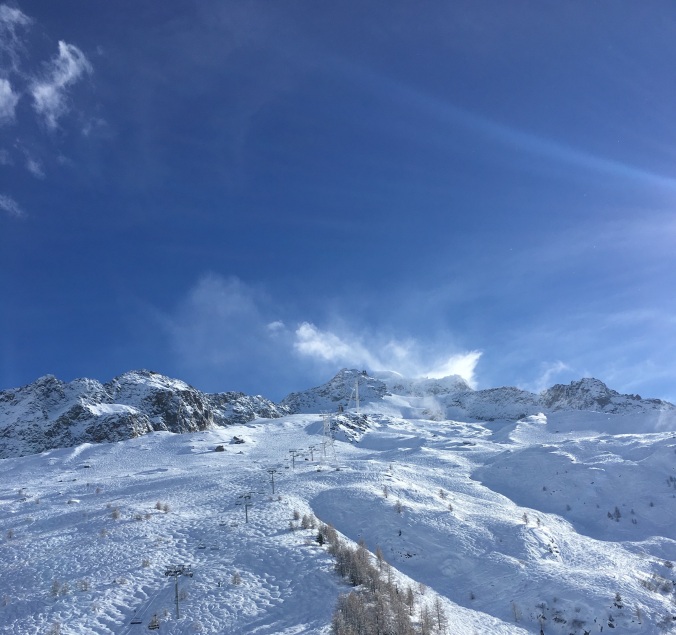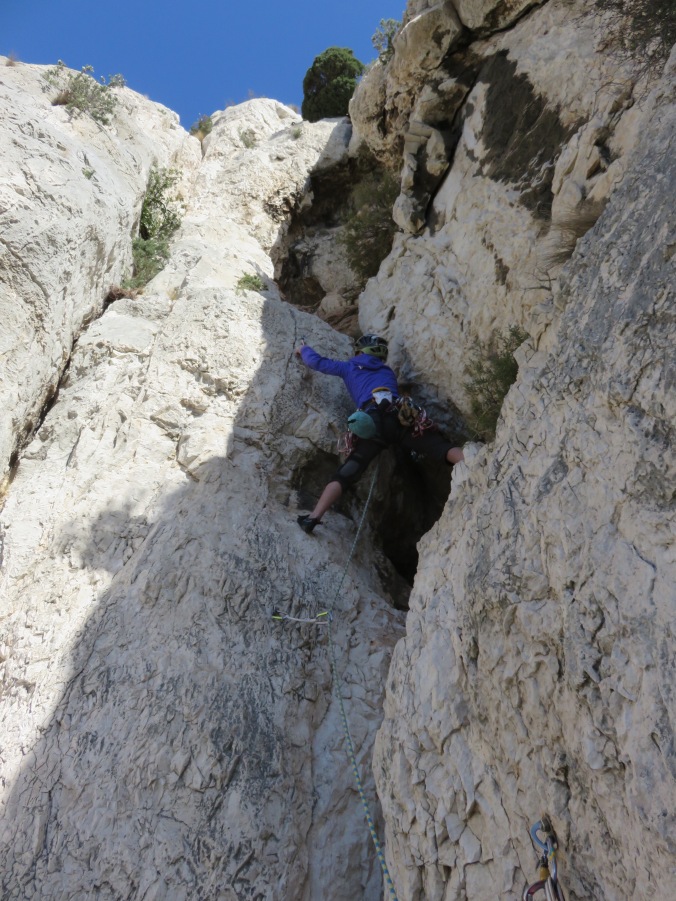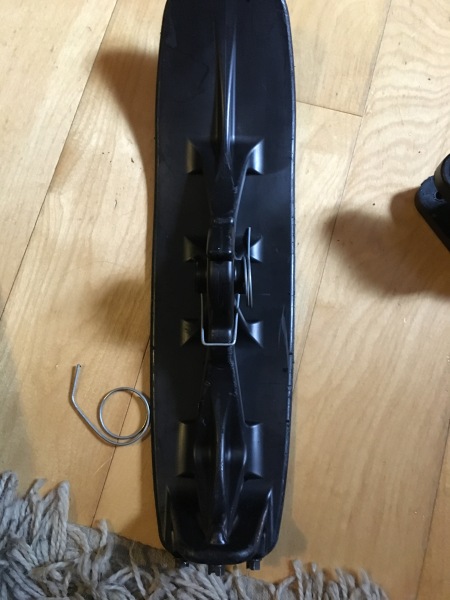We skied a lot less than anticipated due to what I now know is a bad case peroneal tendonitis, which had first cropped up in January on my skiing road trip, but I thought was just muscle inflammation. Tendonitis sucks because tendons are avascular and take forever to heal. I have dealt with elbow tendonitis from climbing, and also in my knees when I was running a lot in my late teens/early 20’s; so I know the deal. It is going to be 3 months at best, probably longer, for recovery. There are a number of contributing factors in my case: standing on one leg when I ski and asking these tendons/muscles to do so much work stabilizing my full body weight, very high arches that put more pressure on the peroneal muscles AND my foot’s tendency to supinate (roll outwards), not stretching at all on my road trip leading to just solid and tight leg (especially calf and hamstring) muscles. This issue may have been instigated on my early December trip to Hong Kong, where I was walking for a couple of hours a day on many days. A diet that was not particularly nutritious and had a lot of foods associated with inflammation did not help matters either. I hate being so high maintenance (not in the tai-tai way, at least).
The pain was bad enough to cut short the skiing, and walking is painful. But we did get some turns in, in gorgeous weather. It was perhaps the first time this winter I was able to ski with my face exposed.

Aiguilles Rouges
I had first learned to ski as an adolescent in Verbier, Switzerland, which borders the Haute-Savoie department Chamonix is in. So this trip to Cham felt a bit like coming full circle (in a very contrived kind of way :)), even though I had never skied in Chamonix before. I am definitely a North America skier by trade, and noticed a number of differences between skiing in Chamonix versus areas in Canada and the U.S.
There are four “altitude ski areas” around Chamonix: Brévent-Flégère, Balme-Vallorcine, Les Grands Montets, and Les Houches. We spent most of our time at Grands Montets because of the more interesting terrain and location and views of the Glacier d’Argentière, les Drus, Aiguille Verte, les Droites, amongst many many peaks. I did not bring any touring gear with me on this trip, so we stayed at the resort the “whole” time.

Les Grands Montets sits right above Glacier d’Argentiere
There had been no new snow for a while before my first ski day ever as a “proper” skier in Europe (!); conditions were pretty icy, and the lower part of the mountain was in bad shape. I was not super impressed with conditions, but was happy to be in very warm, sunny conditions, after all the time spent in really frigid, often low-visibility conditions in Canada and the U.S. on my road-trip. The warm weather did keep the snow that had not been skied off in decent, soft, shape though. But conditions were not good enough to warrant paying the extra to take the tram to the top of the Grands Montets.
One thing I noticed was that people here did not approach me or ask me questions like some do in the U.S., Canada. Maybe it is because of language differences, or maybe it is more cultural reticence to pry. One French skier yelled something to me which I did not understand, and when I apologized for not understanding he said “It is beautiful to ski on one leg like this!” That made my day. Another difference was that I was skiing and riding lift with Yves; whereas on my road trip I was a solo female skier with a curious setup, and that tends to invite conversation.

Yes, I attract a lot of stares with my setup (Photo: Yves Durieux)

A close-up showing how I clip my left leg up to a quickdraw attached to a belt on my waist. Like pin the tail on the donkey. Except no prizes. (Photo: Yves Durieux)
We were not expecting vastly different conditions the next day, so it was a very pleasant surprise to find great skiing conditions! There must have been some new snow overnight, and/or the direction of the wind had deposited the snow favourably. It was a total blast skiing the same runs we had done the previous day. Temperatures were still extremely mild, though a little colder (a good thing), and with such good visibility, we took the tram up to Grands Montets.

Looking up Grands Montets from the lunch deck
I don’t think I can recall a tram at a US ski area covering such a large vertical distance as the tram here. It was great! I had also never been so jammed in a ski lift as was on this tram. It’s a good thing I wear a helmet as my face is at most people’s chest height.
When you exit the tram, there is a little platform area with a great view of les Drus and the Aiguille Verte.

Aiguille du Grands Montets. It’s a lot of steps down from where you exit the cable car down to where you put your ski(s) on.

Aig d’Verte Grand Montets ridge
It was particularly cool to see such a storied and iconic formation, Les Drus, so close up.

Les Drus and Mont Blanc from the top of the cable car (Photo: Yves Durieux)

My right leg is even huuuger (in Donald Trump voice) than my left leg these days (Photo: Yves Durieux)

About to step in ski and ski down from Aig. du Grands Montets. Yeah, those outriggers are kind of beastly (Photo: Yves Durieux)
Because the run gets a lot less traffic than the rest of the resort, the run down and snow was awesome. The views were pretty spectacular too, especially of the 9km long Glacier d’Argentière.

Skiing towards Glacier d’Argentière


Getting turns in from the top of Grands Montets (Photo: Yves Durieux)
I love that there are so many people who tour/ski out of bounds in Chamonix. But there is also a sadness I feel when I see people with their touring bindings (mostly randonee), ice-axes, and avy packs, because I can’t ski like that any more.
My overall impression of the skiers I saw at the ski resort is that there is a very wide range of ability levels, more so than the US. I’m guessing this is due to all the tourist traffic this place gets. I would say the grading of ski run difficulty is also softer here than in the ski resorts in the US and Canada that I have spent time in; and the snow quality in North America is better. That being said, I loved the mild conditions here, the setting, enclosed cable cars (versus frigid long chair lifts).
Another difference is that people don’t really queue up in an orderly way for cable cars/lifts. You have to be slightly aggressive and just push your way to the front to get on a car. I prefer the pervading system in North America, where on busy days/lifts, you have an attendant calling people out and making sure chairs are filled in a fair and orderly manner.
Despite two rest days from skiing (ice-climbing and a complete rest day), I found my lower right leg issues to prohibit me from skiing on Monday. I found myself unable to control my ski because of the pain, and had to cut our day short. Again, I found myself very upset and frustrated that my injury had reared its ugly head and completely ruined a ski day in Chamonix, especially with a good friend. After another few days of rest, I could only ski a run or two on Friday before having to bail. I felt lousy.
While scrambling to rehabilitate my leg/treat the symptoms upon my return to Cambridge, I visited a PA who gave me his diagnosis, admonished the doctor in Jackson, WY for injecting cortisone into my muscle compartment, and did not want to give me another cortisone shot because it was a) too soon since the last one, and b) there is danger of rupturing the tendon if a cortisone shot is done there. All that can be done is to start physical therapy in March, strengthen, and hope I can be ready in time for a planned ski trip in the Southern Hemisphere in August. I also hope that I can return to Cham in the near future to take fuller advantage of the skiing than I did on this trip. Like with climbing and a lot of things in my life, I just need to put in a lot more work than the average person to keep things functioning and to compensate for my physical deficits. It still feels frustrating to feel so thwarted, and that this winter, which was supposed to be the ski season of a lifetime, hardly went according to plan. It does not always seem fair, but there is not much point in dwelling on that, when I need to get on with things, learn from these experiences, so that I can embark on future trips and adventures.

Despite being frustrated and upset with my injury, life isn’t so bad on the lunch deck (Photo: Yves Durieux)


















































